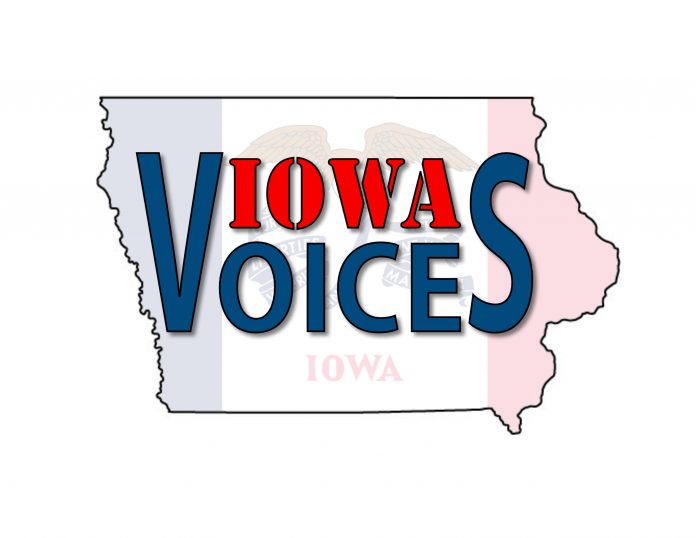Gathered on the horizon is a perfect storm of mounting healthcare demand, dwindling resources and a systemic failure to prepare. What will it take for policymakers and stakeholders to recognize that Iowa’s healthcare workforce challenges are morphing into a crisis, soon to be a catastrophe?
The first element of this storm isn’t complicated: Seventy years after a Baby Boom there’s an Elder Boom. In Iowa, that means 88,000 additional seniors between now and 2030, and numbers remain elevated for decades. However, speaking on behalf of all Boomers, we are done taking the solo rap for crippling demands on health care. Nearly half of all adults aged 18 and older deal with two or more chronic illnesses and a quarter of all children have at least one. That explains why 86 percent of all healthcare spending is attributable to chronic conditions.
Four of the top five job postings at Iowa Workforce Development are in health care, a symptom of the second element of this storm, dwindling resources. Although one-third of doctors and one-fifth of nurses are at or close to retirement, aging out is only one cause of the mass exodus now underway. Nationwide, eight of ten doctors admit feelings of burnout and one-third of nurses plan to change jobs in the near future. What will it take for healthcare leaders to acknowledge the toll that understaffing, burnout, disrespect, threats to personal safety and low compensation are taking on workers’ well-being? Iowa is ranked 51st in the nation for nurses’ salaries, our direct care workers make only 75 percent of the national average and three-quarters of our medical school graduates leave Iowa. That “brain drain” should come as no surprise when 80 percent of today’s medical residents get more than 50 job offers. Meanwhile, Iowa ranks 44th in the nation for doctor retention.
You know health care is not alone because you’ve seen the Now Hiring signs everywhere. And no, it will not be okay “once we recover from the pandemic.” This decline in Iowa’s workforce began in 2016, is projected to continue until 2031 and then it takes another five years to get back to today’s number. Where have all the employees gone? Actually, they never existed. Since the early 1970s, births have been below the population replacement rate, so once Boomers had fewer grandchildren than children, today’s labor shortages were 100 percent predictable. Iowa’s working-age cohort (aged 18 to 64) shrinks by 40,000 over this decade, concurrent with projected job growth of over 220,000. Not a good pairing.
And then there’s the third element, Iowa’s astonishing lack of foresight, which is déjà vu all over again for Boomers. In the 1950s, the U.S. was short 250,000 classrooms and 800,000 teachers before anyone noticed, and catching up took 20 years. Soon after, no one envisioned young people would one day leave home; that lack of planning caused housing prices to quadruple for the youngest Boomers. Fast forward, and health care isn’t classrooms or teachers or houses. Health care is a unique commodity that, when scarce, can potentially harm or cost the lives of patients and practitioners.
What will it take for Iowa’s healthcare leadership to admit that their meager efforts to stem this tide are not working? The number of doctors in Iowa fell 358 from 2020 to 2022, and 11 percent of our nurses have vanished over the past seven years. We can’t assess the army of direct care workers who make possible long-term, hospital and home care (CNAs, home health aides and personal care aides) because, unfortunately, the state of Iowa doesn’t even track them. Others do, and the healthcare consultant Mercer projects Iowa will be short 36,000 of these frontline workers by 2026.
I can’t explain why leadership has made the conscious decision to not quantify today’s healthcare worker shortages, nor to make forecasts of future adequacy. Nonetheless, there is an abundance of anecdotal evidence: “Patient boarding” in slammed emergency departments, delayed appointments and procedures, harmful medical errors, grossly underserved mental health needs, unanswered 911 calls, rural—and urban—hospitals under threat of closure and 26 Iowa nursing homes shuttered since June 2022.
The window of opportunity to secure needed growth in Iowa’s healthcare workforce has closed, so the only remaining option is to reduce demand by facilitating patient engagement and making the highest and best use of available resources. It’s mandatory that we 1) prioritize patient self-advocacy and care management skills and 2) attract and retain workers with forward-thinking incentives and respectful, safe work environments. Technology, such as artificial intelligence and telehealth, holds great promise for addressing these unrelenting worker shortages. It’s time for the innovators and disruptors among consumers, advocates, providers, insurers, employers and bureaucrats to step forward and restore access and safety for health care’s true “stakeholders,” its patients and providers.
We can continue to ignore Iowa’s demographics, but we do so at our peril. Forty-nine other states already are—or soon will be—waking up to the looming crisis of access for their constituents. Those first to revolutionize healthcare delivery and snare the talent will win. Iowa has smart, hardworking people, exceptional healthcare capabilities and even the financial resources to preserve Iowans’ access to healthcare. But tick tock, the perfect storm is no longer approaching. It is here.
Jo Kline is a thought leader on health care access and the founder of the Iowa Institute for Health Literacy. Now retired from her career as a business owner and attorney, Jo began her 20-year journey of researching, writing and speaking about patient advocacy by serving as volunteer chair of Iowa’s largest hospice. She has now incorporated her unique expertise on demographics, the workforce and health literacy into an innovative initiative, Bridges to Health Care Access. Its mission is to raise awareness of the threats to access and to share life-changing strategies that can benefit every individual and “community” in achieving best possible health outcomes.











